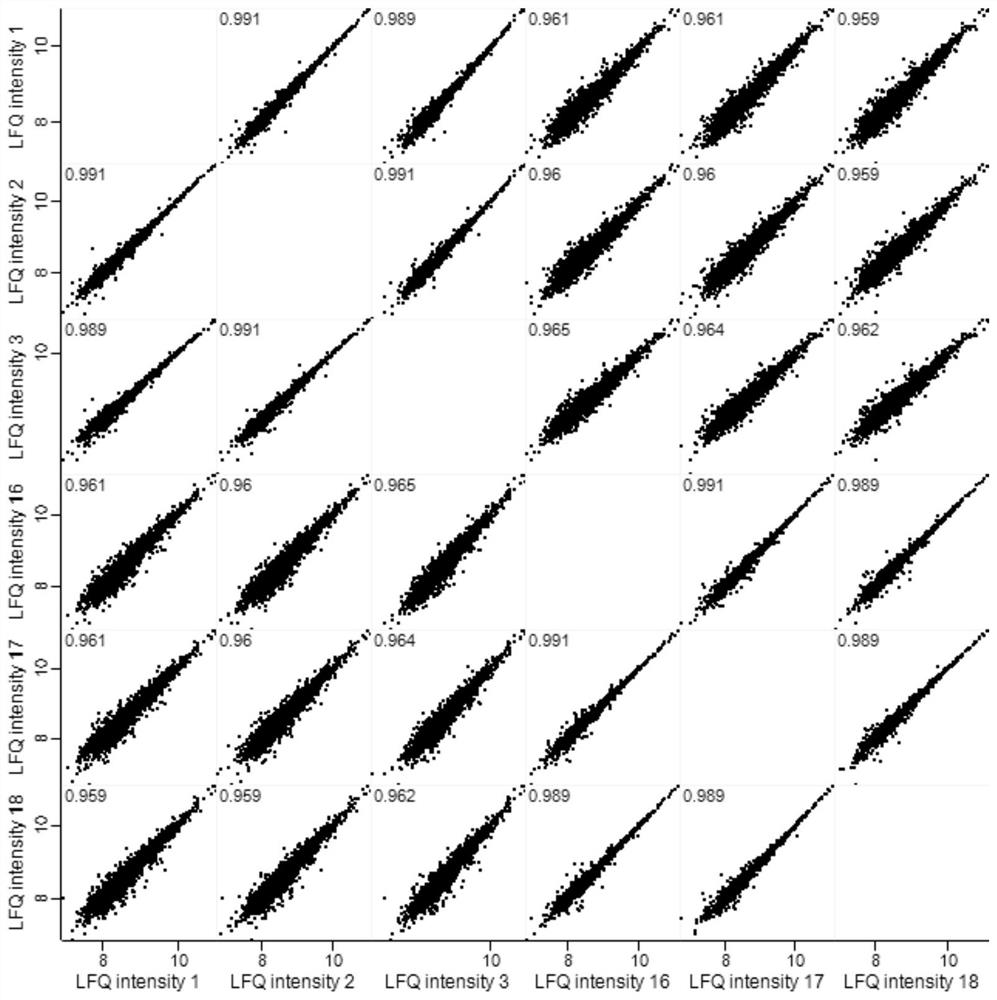A method for in situ analysis of intracellular protein complexes and its application
A protein complex and in situ analysis technology, applied in the field of biological analysis, can solve the problems of in situ analysis of intracellular protein complexes, and achieve the effect of solving in situ analysis difficulties and easy inactivation
- Summary
- Abstract
- Description
- Claims
- Application Information
AI Technical Summary
Problems solved by technology
Method used
Image
Examples
Embodiment 1
[0028] Preparation of a carrier based on the polymer polylactide-glycolide: 2 mass parts of castor oil polyoxyethylene ether, 15 mass parts of polylactide-glycolide, 1 dodecyldimethylammonium bromide Parts by mass, 4 parts by mass of the crosslinking agent (disuccinimide suberate) was dissolved in 500 parts by mass of dichloromethane. The above mixture was poured into an aqueous polyvinyl alcohol solution, and ultrasonicated, and the carrier was further solidified with the polyvinyl alcohol solution to prepare a carrier.
[0029] at 37°C, 5% CO 2 Under the conditions, the vector was co-incubated with HepG2 cells at 1640°C without serum, such as figure 1 As shown, the vector enters the cell. After co-incubating for 0-12 hours, the cells were collected, and ionic liquid was added to extract the protein and its complex. The amount of extracted protein is shown in Table 1. The Pierce correlation coefficient ( figure 2 ) shows that the carrier has little disturbance to the int...
Embodiment 2
[0035] Preparation of polymer / gold composite-based supports at 37 °C, 5% CO 2Under the conditions, the vector and HepG2 cells were co-incubated in DMEM with serum for 6 hours, the cells were collected, and mitochondria were further extracted, and ionic liquid was added to extract proteins and their complexes. For the protein extracted from mitochondria, dithiothreitol was added and denatured at 95°C; then the sample was transferred to a filter membrane and alkylated with iodoacetamide; proteins and their complexes were treated with trypsin Perform on-membrane digestion and collect samples of peptides and their cross-linked peptides by centrifugation. The collected peptides and their cross-linked peptides were analyzed by liquid chromatography-mass spectrometry, and a mass analyzer with high precision and high resolution was selected for mass spectrometry: electrostatic field orbitrap (Oribitrap). After mass spectrometry analysis, Mascot and pLink were used to analyze the mass...
Embodiment 3
[0037] Preparation of polymer / gold composite-based supports at 37 °C, 5% CO 2 Under the conditions, the vector and HepG2 cells were co-incubated in DMEM with serum for 6 hours, the cells were collected, and mitochondria were further extracted, and ionic liquid was added to extract proteins and their complexes. Add tris(2-carboxyethyl)phosphine to the protein extracted from the mitochondria, and perform high temperature denaturation at 85°C; then transfer the sample to a filter membrane, and use iodoacetamide for alkylation; use trypsin to treat the protein and its complexes were digested on the membrane, and the peptides and their cross-linked peptide samples were collected by centrifugation. The collected peptides and their cross-linked peptides were analyzed by liquid chromatography-mass spectrometry, and a mass analyzer with high precision and high resolution was selected for mass spectrometry: electrostatic field orbitrap (Oribitrap). After mass spectrometry analysis, use...
PUM
 Login to View More
Login to View More Abstract
Description
Claims
Application Information
 Login to View More
Login to View More - R&D
- Intellectual Property
- Life Sciences
- Materials
- Tech Scout
- Unparalleled Data Quality
- Higher Quality Content
- 60% Fewer Hallucinations
Browse by: Latest US Patents, China's latest patents, Technical Efficacy Thesaurus, Application Domain, Technology Topic, Popular Technical Reports.
© 2025 PatSnap. All rights reserved.Legal|Privacy policy|Modern Slavery Act Transparency Statement|Sitemap|About US| Contact US: help@patsnap.com


